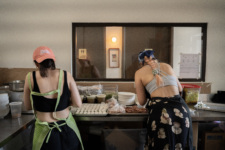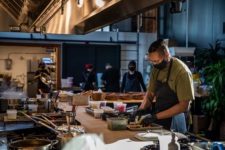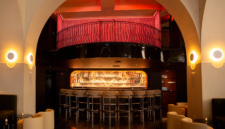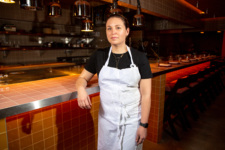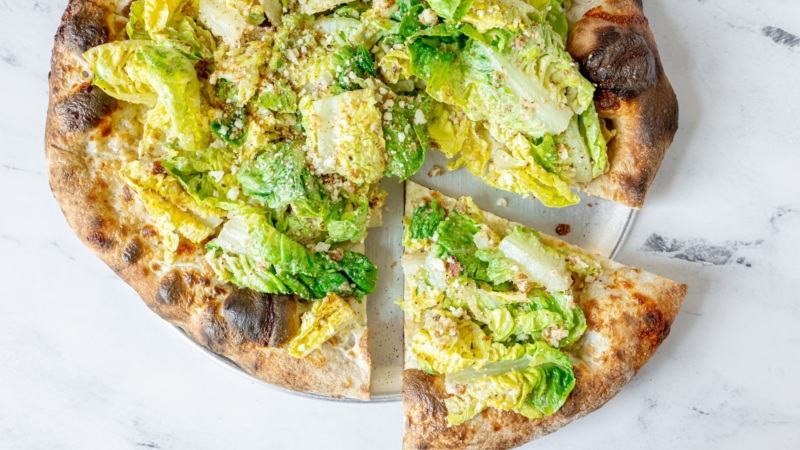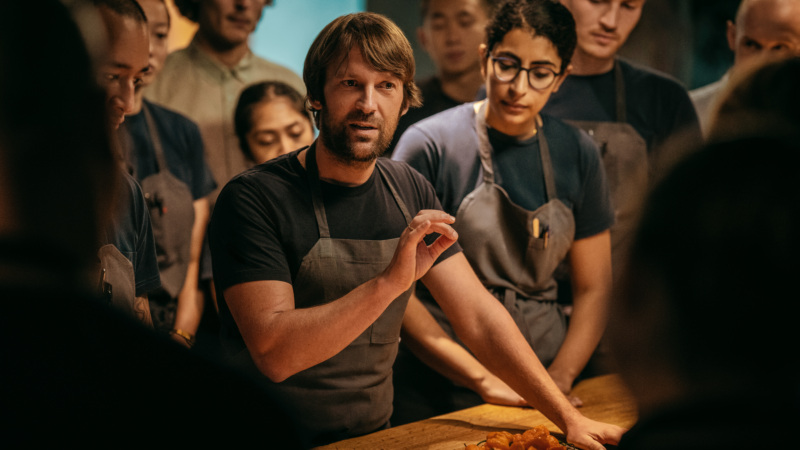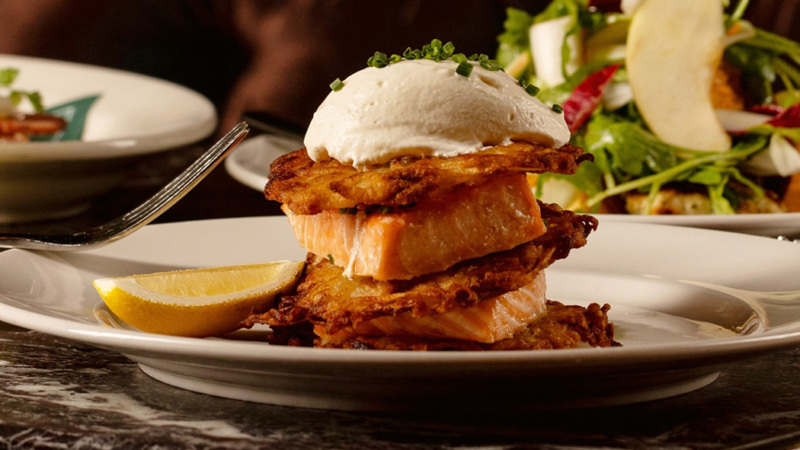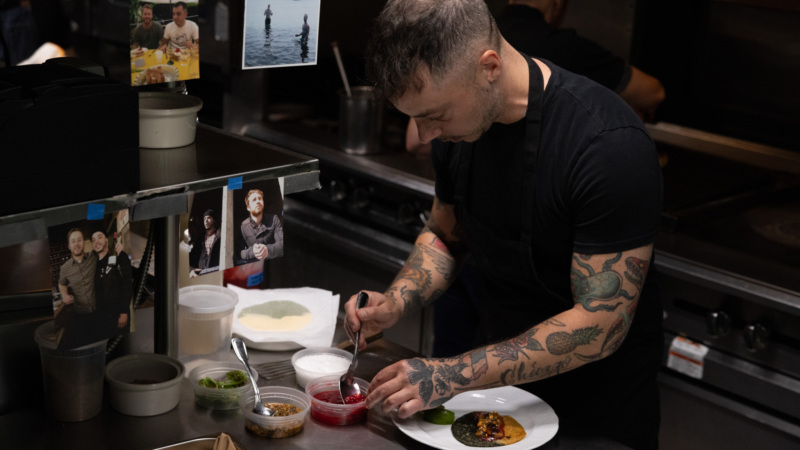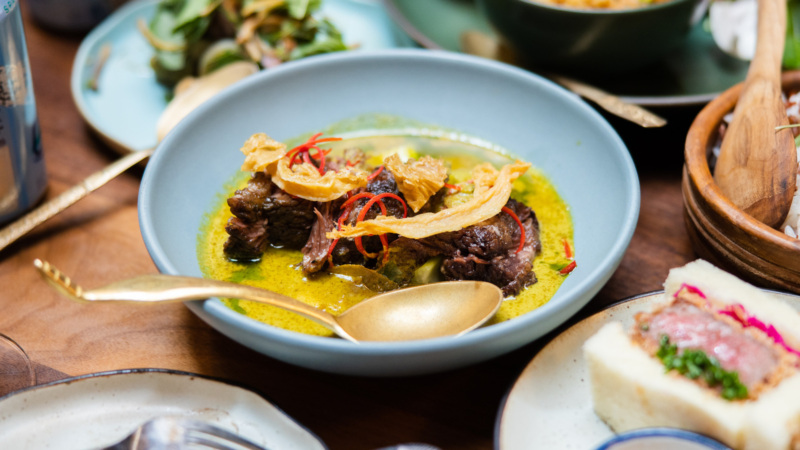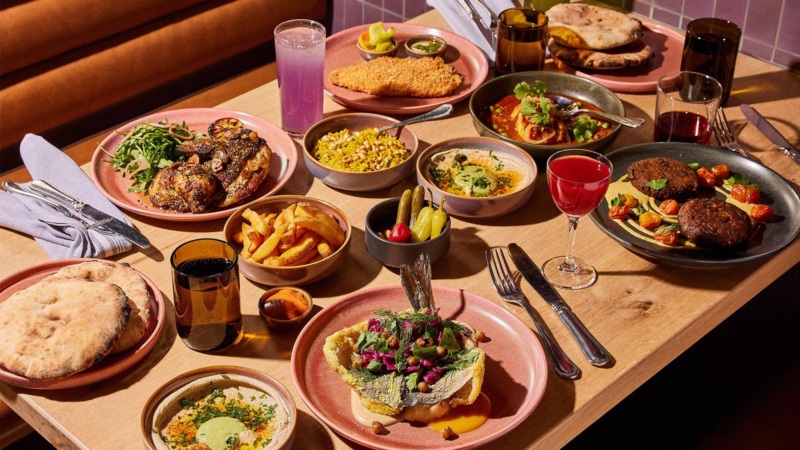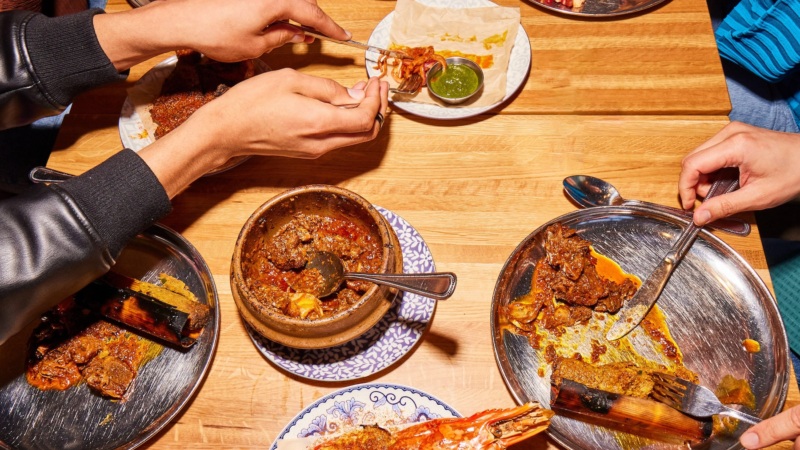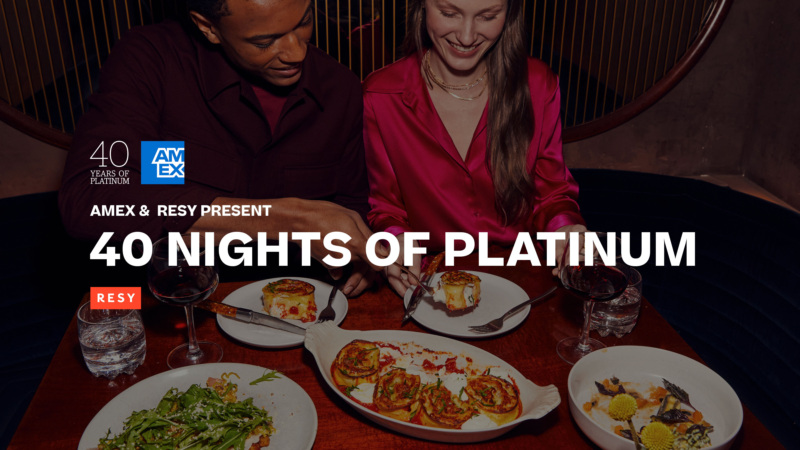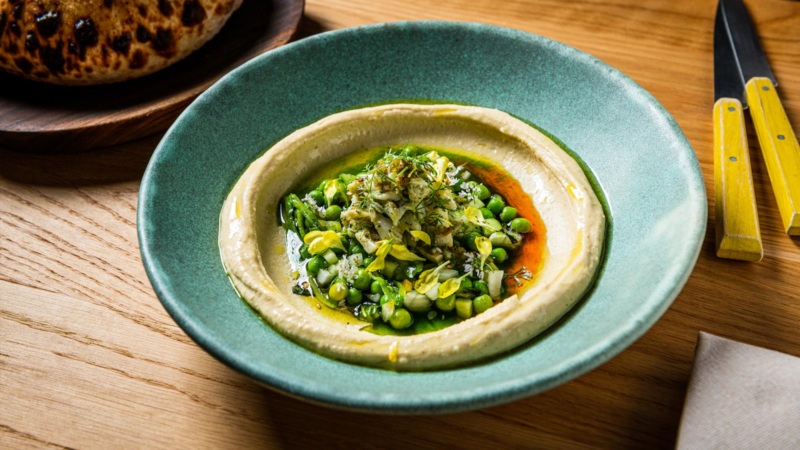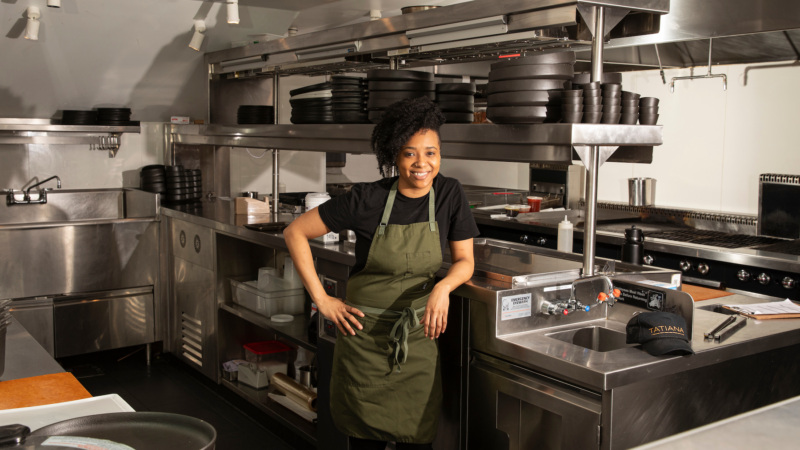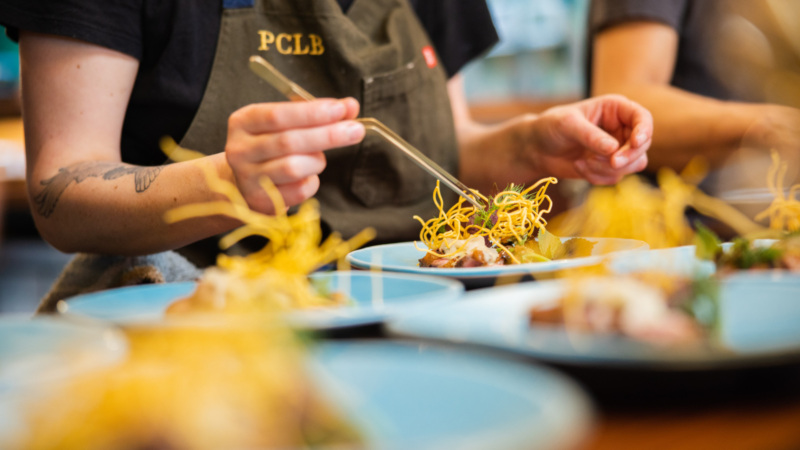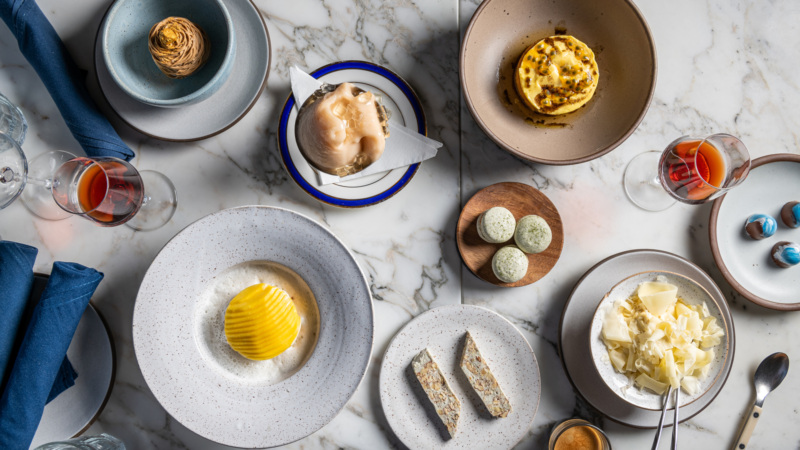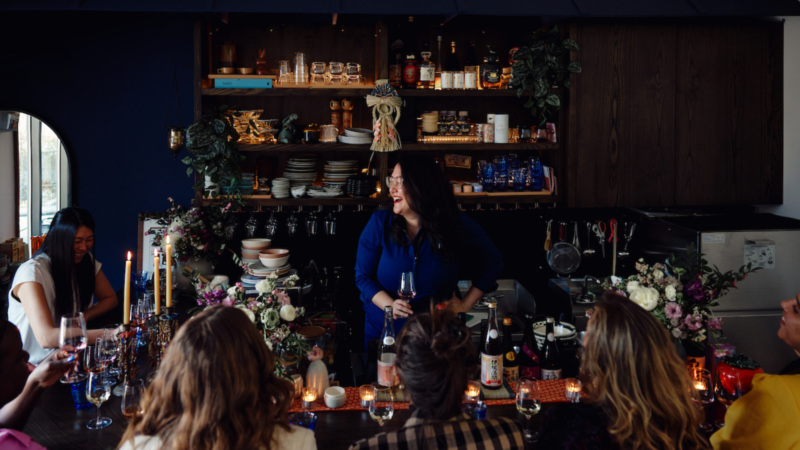
Taste Matters National Los Angeles New York
When a Meal Is a Tasting Menu, What Is the Message?
When I was working as a restaurant critic, I learned how to read a menu. By that, I mean coming to understand that the format of the meal itself, as outlined on the menu, contained some important information. Not only does the menu structure a meal at a restaurant, it sets expectations for the experience to come. It is a chef’s direct line of communication to the dining room and an attempt to convey the kitchen’s intentions. As a result, the range of options, from freewheeling a la carte to the strictest omakase, tells you — the diner — much more than just what the kitchen is cooking. And despite the unfortunate outliers in each category (say, a long and arduous tasting menu), each format serves a purpose.
The tasting menu is probably the most coded of all menus, with an implicit message often lurking behind each carefully designed course. Early in my days traveling and eating professionally, it became apparent that any menu using the phrase “chef-led tasting” was subliminally telling me to expect an “elevated experience” — some big air quotes there — worthy of its not insignificant price tag. Booking a tasting menu or omakase became an act of submission, as I embarked on whatever gastronomic journey the chef had decided to share with the world. After all, the linear progression of a good tasting menu is not unlike the narrative arc of a captivating story. The arc of an overwrought tasting menu is … well, you get it.
Because of its French (and in a different way, Japanese) origins, tasting menus often had a French or Japanese bent. But of late, the form has begun to expand its scope. It has become a model for a new, more regionally diverse cohort of chefs to tell a personal story — albeit still one with encoded messages.
This is the case for Ayo Balogun, the chef and owner of a new Nigerian restaurant called Dept. of Culture in Bed-Stuy, Brooklyn. Balogun cooks a four-course meal featuring Nigerian comfort foods from his childhood, like egusi with pounded yam. Balogun chose the tasting menu format precisely for its ability to signal value, sophistication, prestige. “Most people look at food of African descent as something that’s not good enough to be in that format,” he tells me. Indeed, the Nigerian tasting menu at Dept. of Culture is the first of its kind in the city, probably in the country. In its singularity, it is a subversion of inferiority, an invitation to see things differently.
That subversion points to the powerful associations of the tasting menu. In its modern iteration, it has become a personality-driven spectacle, well-suited to stars and awards. Less cynically, it is a chef’s opportunity to reframe their narrative. For Balogun, it’s storytelling with a distinct purpose. “It’s not just to change minds, but to educate people,” he says.
If communal dining is more straightforward than a tasting menu, it is no less consequential — either in form or subtext.
At Dept. of Culture, the shift starts with the ingredients. Since the restaurant opened earlier this year, Balogun has eschewed more common proteins like beef in favor of fish. “We still haven’t served beef or goat meat because there’s such a wealth of seafood to eat,” he says, commenting on the varied salt- and fresh-water fish available in Nigeria.
Throughout our conversation, Balogun insists on moving past the stereotypes of Nigerian cuisine, and more abstractly, the Nigerian people. “I try to inform people that while we might be in this part of the world, we’re having a similar experience,” he says. In other words, he argues, whether you’re in Bed-Stuy or Lagos, there is equal desire to pursue a good life and good taste. If that’s the message, the tasting menu just happens to be the medium he’s harnessed.
On the other end of the spectrum, if communal dining is more straightforward, or at least less contrived, than a tasting menu, it is no less consequential — either in form or subtext. Just as there is cultural resonance (and baggage) with the formal tasting, the experience of gathering with friends around a table at a restaurant, passing shared platters and organizing a tableful of food, invokes its own resonance: a spirit of communality that defines many cultures’ all-at-once mode of eating.
At Lasita in Los Angeles, co-owners Chase Valencia and Nico de Leon, the chef, designed their Filipino menu as a family-style feast for this precise reason. The communal style was intentional, Valencia told me, because big-batch cooking and family-style meals were representative of the culture. At Lasita, guests make a meal out of no less than half a roasted chicken or half a pound of lechon, plus sides and sauces. They also have a “Pamilya-style” large-format meal for bigger groups.
“Whatever our parents were cooking, it was always for multi-generational members of the family. It was easier, more communal, more fun,” remembers Valencia. The difference, of course, is that this communal style of eating was closely linked to how de Leon and Valencia ate at home; to bring it into a restaurant space was a concerted choice, to eschew formality for an almost nostalgic comfort. The goal was to cultivate — or perhaps to elevate — the feeling of togetherness that gives every culture its vitality, its warmth, in place of the precious individuality of the tasting menu.
Funnily enough, prior to the pandemic de Leon was cooking a tasting menu at Lasa, the fine-dining precursor to Lasita. And he too appreciates its ability to frame the value of a cuisine. “It’s a beautiful way for a chef or a team or a restaurant to convey their intentions,” he acknowledges. Not to mention, a much more controlled way to run a restaurant. But after the last two-plus years, encouraging conviviality felt more important than serving a predetermined sequence of tiny, perfect morsels. “You’re clinking, you’re pouring, you’re laughing, it’s a celebration,” says Valencia.
And here de Leon has gotten very much to the point. Communal dining at a restaurant is very consciously about a chef’s will, which in this case is to foster sharing and revelry. It’s no different from a tasting menu being about a chef’s perspective, a narrative written through their food. I don’t believe one choice is better; they each achieve a different objective.
Ironically, where food is concerned, there may actually be more freedom for a chef to experiment within the confines of a tasting menu. The flip side of a communal meal being so associated with comfort and culture is that it implies a familiarity, where the chef-driven focus of tasting menus allows for small moments of innovation. With the latter, there’s perhaps less risk to disappoint customers by changing a cherished dish. “Initially, the reason I didn’t do a Nigerian restaurant was because I thought Nigerians were going to criticize the s–t out of it,” Balogan jokes — although the concern was real that he might not live up to the lofty expectations of his fellow expats. To tweak the context of a culture’s familiar dishes does, indeed, come with risks, as was the case with how some South Asian diners perceived the ambitious pricing at Dhamaka.
And yet I do sometimes wonder if that would-be freedom comes at a cost, at least for cuisines historically shut out of fine dining. Often, the tasting menus that reinterpret communal cuisines tend to look and feel quite different than their muses. Slow-cooked stews and platters spilling over with rice or noodles are swapped out for dainty knifework and soigné presentation — which, to be fair, is perfectly okay. These are the tools and techniques of haute cuisine, so why not dress up an adobo once in a while? But does the formality deprive a cuisine of its intimacy and kinship? Does it stuff other cooking into a tidy French box? At what point does the format overshadow the form?
At Dept. of Culture, Balogun seems to have found a good balance. He individually portions his egusi over pounded yam, but dishes are served to each diner at the same time — and, crucially, to everyone seated together at one big communal table. It’s similar to the dinner party aspirations at Lazy Bear in San Francisco or Niche Niche in New York, but different in that it’s rooted in the cultural tradition Balogun wants to highlight. Many more restaurants, from Hi Felicia in Oakland to Laser Wolf in New York, have similarly used banquet-style dining and set menus to marry together these disparate elements of eating out. To me, this synchronized style of dining is a happy compromise — indulging in a chef’s perspective while also embracing the joy de vivre of a meal eaten among friends and family.
That isn’t to dismiss the transformative abilities of the classic tasting menu format, especially in more spendy venues, such as the West African-influenced Ikoyi in London to the modern Filipino Kasama in Chicago. Those experiences feel like opportunities to challenge assumptions — including my own — of how certain cuisines should present themselves. It feels right to see every cuisine translated into something as special and story-driven as a tasting menu.
But like any work of translation, the intermediary is as important as the message itself. In this case, it’s the chef. Whether their menu says the right thing is a function of how good an interpreter they are.
Mahira Rivers is a restaurant critic and writer based in New York, and Resy’s dining columnist. In addition to spending five years as an anonymous inspector for The Michelin Guides, her writing has been published in The New York Times, New York Magazine, Food & Wine, GQ and elsewhere, and recognized by the James Beard Foundation. Follow her on Twitter and Instagram. Follow Resy, too.

